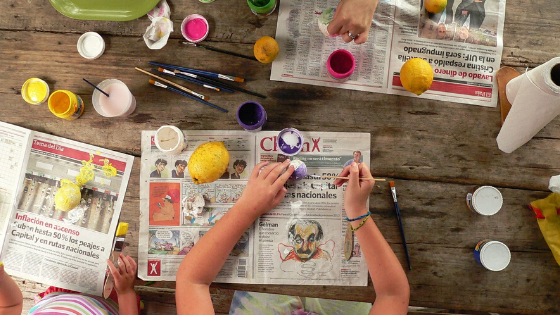Institutions like museums and schools bear the brunt of responsibility for educating the public. These educational centers develop curricula and devote resources to discovering the best ways to educate those for whom they are responsible. We know this and we expect this to be true. Yet, there is a far more nebulous source to which we are all exposed, and that has as much, if not more, influence on us and our futures: our parents.
Cultural participation is forced on us when we are children in school and we take art classes and go on field trips (but not all of us. Refer to my posts on schools and museums). Then, we leave school and typically don’t return to cultural institutions until we have children of our own. The 18-34 age group is one that museums have had a difficult time attracting1; we will look into the interesting ways that museums are interacting with this age group in a future post. However, there is a higher rate of cultural participation after graduating if the parents have been cultural participators2.
This makes sense. We pick up so many habits and interests of our parents over the years. Going to art museums and appreciating art would naturally develop as a potential interest if one’s parents have an interest in going to museums and if they talk about art.
The wrinkle in familial cultural participation is that there is a discrepancy depending on socio-economic status. Wealthier people tend to use (traditional, “high-brow”) cultural participation as a currency among their peers and so parents in these circles stress the importance of appreciating art to their children in a way that other people in other communities may not3. This does not mean that other people in different socio-economic levels are not passing down cultural interests and appreciation, but the focus of this site is to connect communities to art that has been deemed “high-brow” and inaccessible and this “cultural participation as currency” is a major reason why some communities feel that it is inaccessible.
As parents become more involved in schools and demand more, parents can be a driving force to ensure that art education becomes and stays a priority in schools4. On the other hand, parents can not simply leave it to schools to instill an appreciation for art in their children. In the 1960’s, two sociologists, De Jager and Bourdieu, published a study that stated that school art education inspired a temporary, fleeting, interest in art, but that it was parental guidance that created long-term cultural appreciation5. This means parents must display an appreciation themselves and they must be cultural participators to ensure that their children have a desire to take part in the future.
- Korn, Randi. “Audience Research Young Adult Study,” 30.
- Nagel, Ineke. “Cultural Participation Between the Ages of 14 and 24: Intergenerational Transmission or Cultural Mobility?” European Sociological Review 26, no. 5 (2010): 541–56.
- ibid
- Caucutt, Allen. “An Open Letter to Parents.” Art Education 33, no. 8 (1980): 7–7.
- Nagel, Ineke. “Cultural Participation Between the Ages of 14 and 24: Intergenerational Transmission or Cultural Mobility?” European Sociological Review 26, no. 5 (2010): 541–56.

